How is vaccination going in Italy. Report
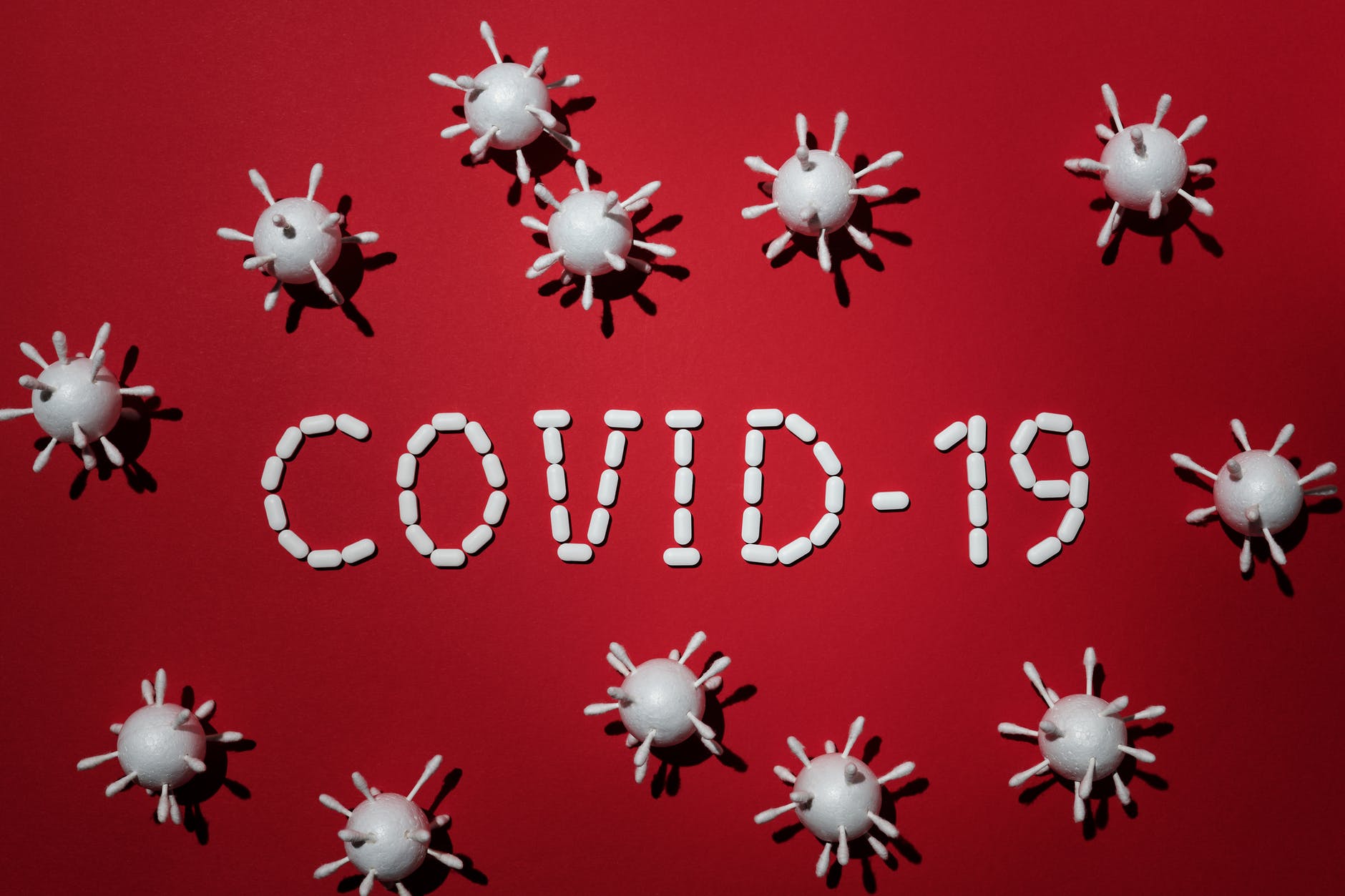
What emerges from the report edited by the Gimbe foundation on the pandemic and the progress of the vaccination campaign in Italy. Numbers, comparisons and analyzes
As of June 2 (update 6.08), 40.3% of the population had received at least one dose of vaccine (no.23.852.541) and 20.7% completed the vaccination cycle (no.12.294.543). Considering that the Regions are using almost all of the doses available, the non-take-off of deliveries affects the number of administrations, which have now been stable for a couple of weeks.
81.5% of the over 60s received at least the first dose of the vaccine, with some regional differences: if Puglia, Umbria, Lazio, Lombardy, Veneto and Molise exceed 85%, Sicily still remains below 70%.
Among other things, this is revealed by the updated report of the Gimbe foundation on the pandemic in Italy and on the vaccination campaign in Italy: "While the coverage in the 50-59 and 40-49 age groups is starting to rise, they are still beyond 3.3 million over 60 at high risk of hospitalization and death who have not received even the first dose of vaccine ".
Here is the full report of the foundation.
+++
The independent monitoring of the Gimbe Foundation detects in the week 26 May-1 June 2021, compared to the previous one, a further decrease in new cases (22,412 vs 30,867) (figure 1) and deaths (720 vs 1,004) (figure 2). There was also a sharp decline in cases currently positive (225,751 vs 268,145), people in home isolation (218,570 vs 258,265), hospitalizations with symptoms (6,192 vs 8,557) and intensive care (989 vs 1,323) (figure 3). In detail, compared to the previous week, the following changes were recorded:
- Deaths: 720 (-28.3%)
- Intensive care: -334 (-25.2%)
- Hospitalized with symptoms: -2,365 (-27.6%)
- Home isolation: -39,695 (-15.4%)
- New cases: 22,412 (-27.4%)
- Currently positive cases: -42,394 (-15.8%)
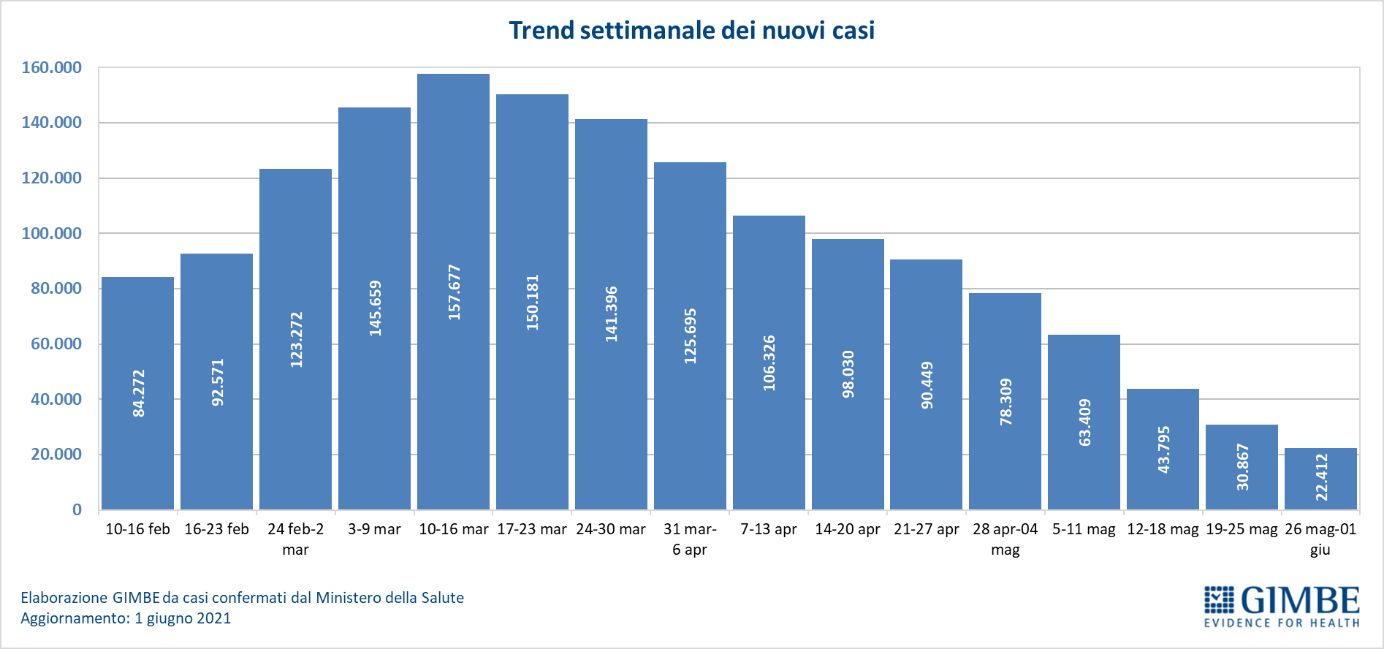
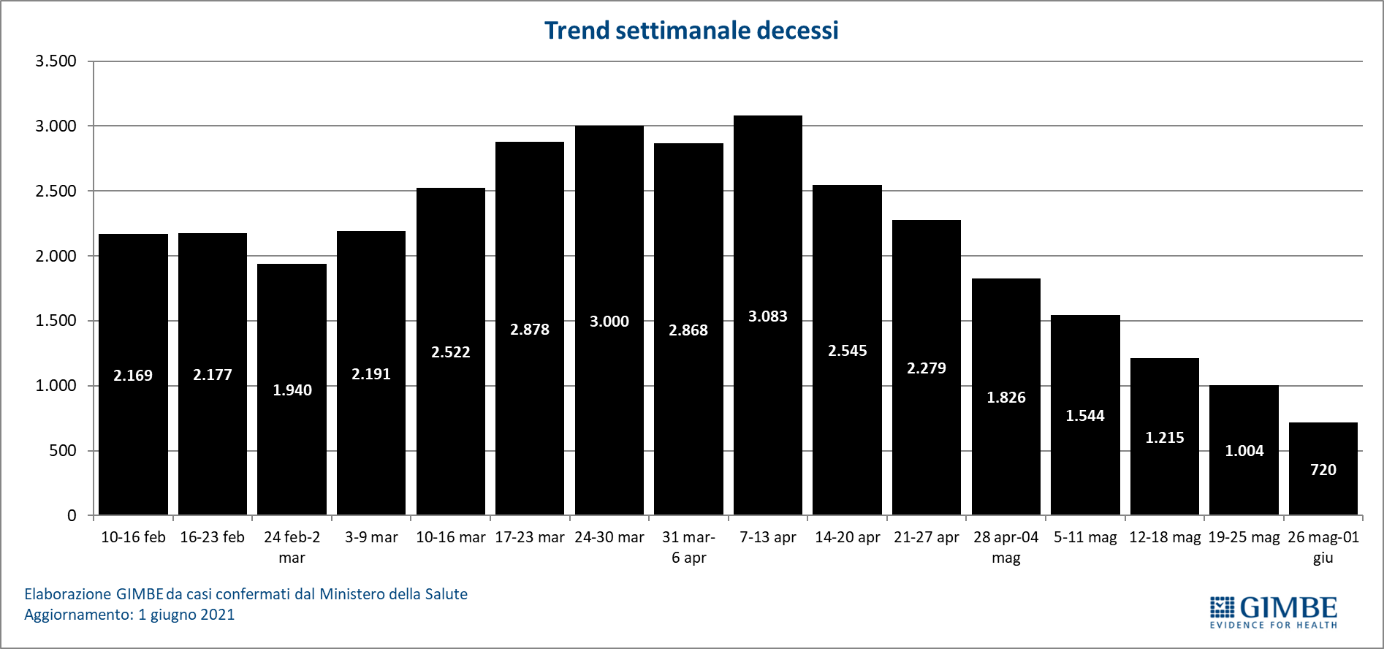
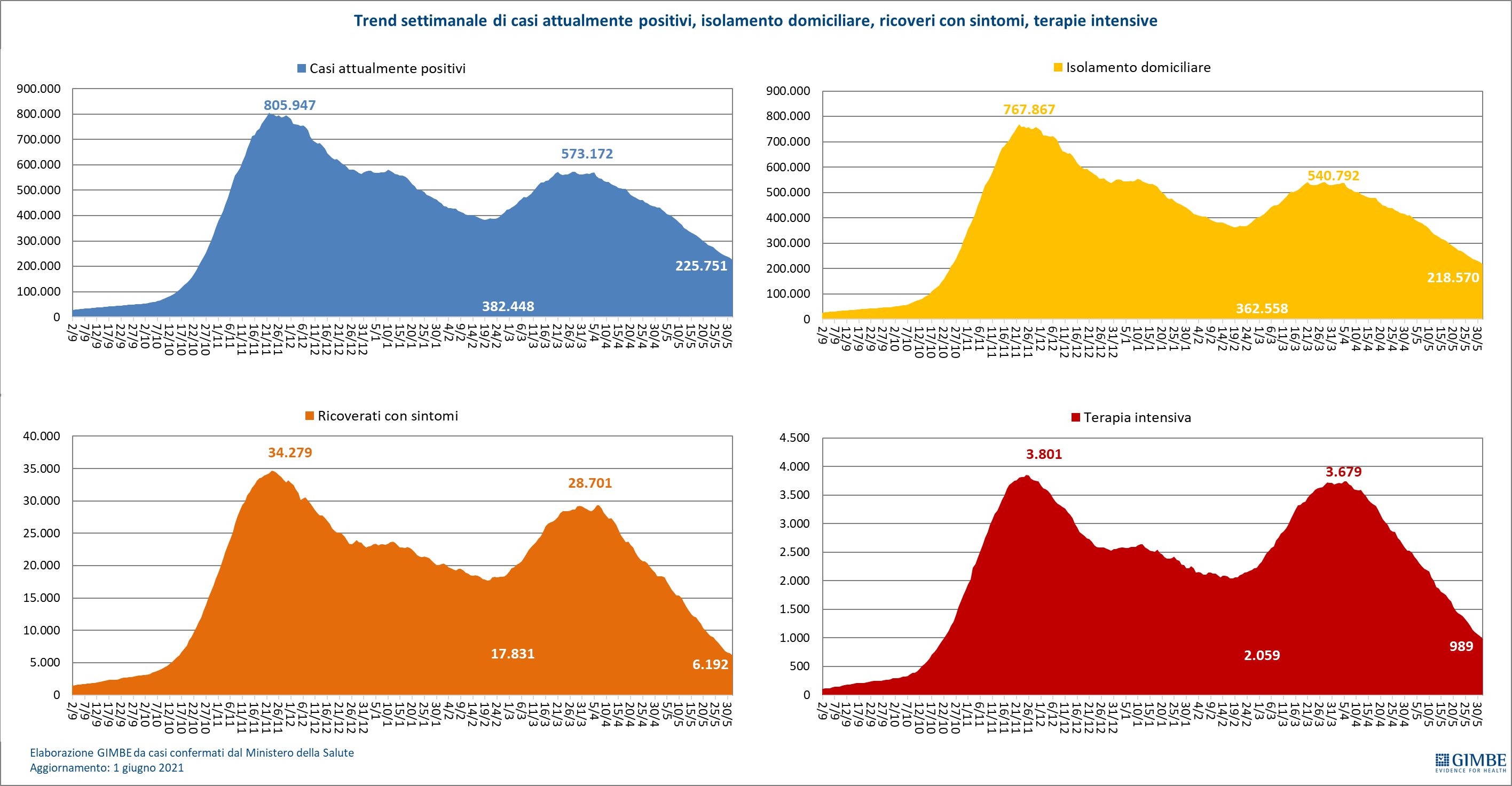
"For 11 consecutive weeks – declares Nino Cartabellotta, President of the Gimbe Foundation – the downward trend of new cases has been confirmed, both for the reduced circulation of the virus, as demonstrated by the reduction in the postitive / cases tested ratio, and for the decrease in testing activities. Deaths have also been steadily decreasing since mid-April, averaging just over 100 per day in the last week ». The decline in new weekly cases is confirmed in all Regions, with the exception of a percentage increase in Molise, which is irrelevant in absolute terms. (table).
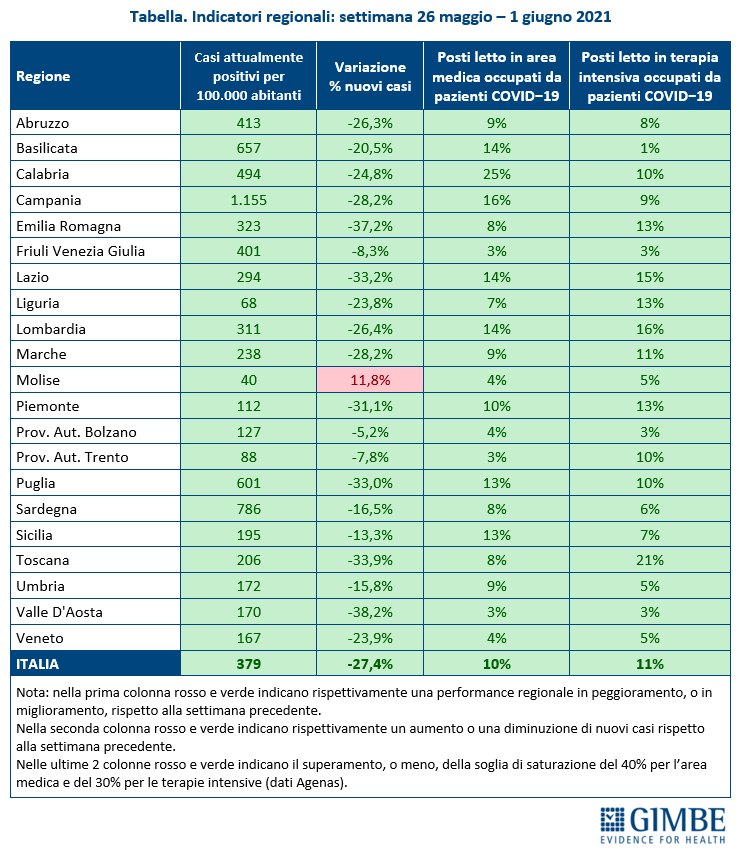
«Thanks to the vaccination coverage of the elderly and the frail – says Renata Gili, Head of Research on Health Services of the Gimbe Foundation – the gradual emptying of hospitals continues. The occupation of Covid beds nationwide stands at 10% in the medical area and 11% in intensive care, with all Regions under the alert thresholds ". In detail, from the peak of April 6, the number of beds occupied in the medical area fell from 29,337 to 6,192 (-78.9%) and those in intensive care from 3,743 to 989 (-73.6%). The curve of people in home isolation falls less rapidly: from the peak of 28 March they have decreased from 540,855 to 218,570 (-59.6%) (figure 3). "The admissions to intensive care – explains Marco Mosti, Operations Director of the Gimbe Foundation – have dropped from 9 weeks with a 7-day moving average that stands at 36 admissions / day" (figure 4).
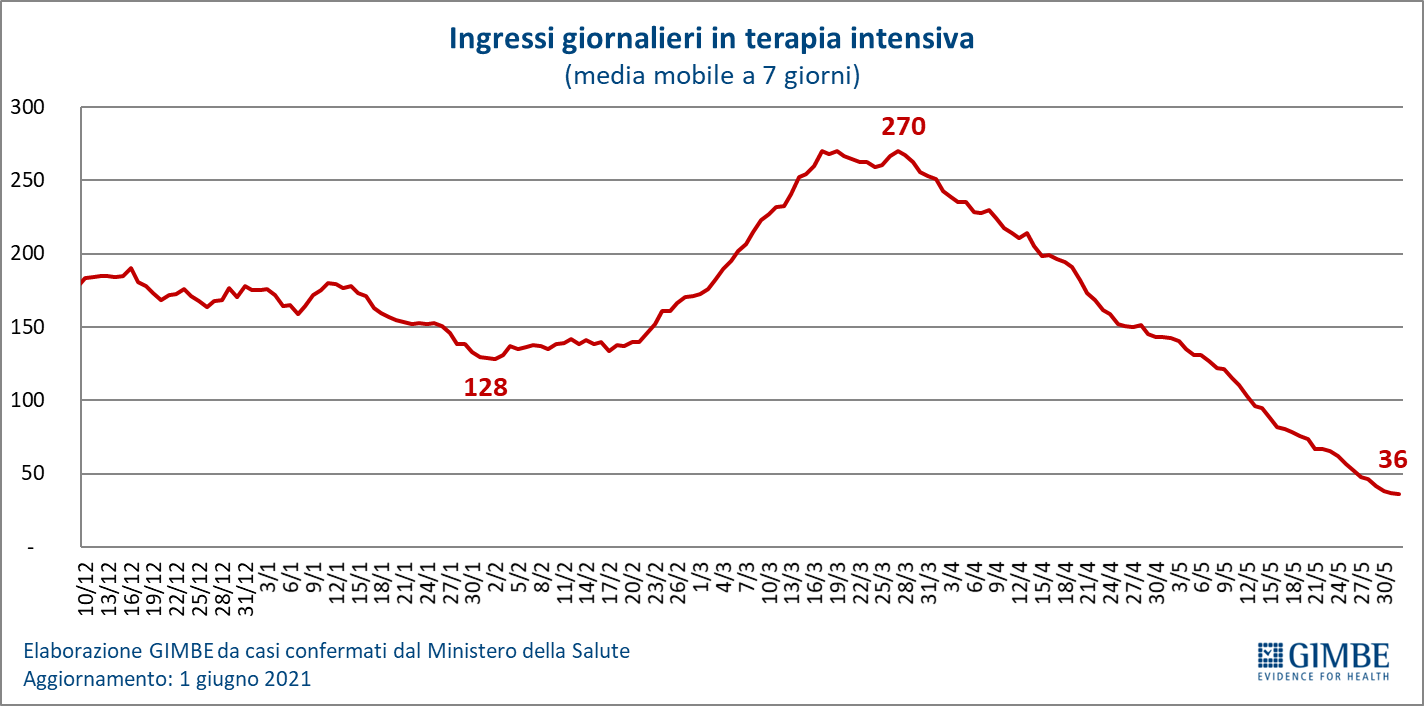
In this phase of decreased circulation of the virus and easing of pressure on hospitals, two critical issues are noted: on the one hand, the reduction in testing activity which certifies the renouncement of case tracking, on the other hand a significant regional heterogeneity in the sequencing activity . In detail:
- Testing: the number of people tested weekly, stable until the first ten days of May, decreased in the last 3 weeks from 662,549 to 439,467 (-33.7%) (figure 5). And in the same period, an average of 120 people / day per 100,000 inhabitants were tested, with molecular or antigenic swabs, with clear regional differences: from 199 in Lazio to 49 in Puglia (figure 6). «Unfortunately – explains Cartabellotta – the criteria for conquering and maintaining the white area, introduced with the DL May 18, 2021 n. 65, discourage the Regions to strengthen testing activities and resume tracing, just when the numbers of the infection would allow the use of a weapon that has never been adequately used ".
- Sequencing: in the bulletin Prevalence and distribution of variants of the Sars-Cov-2 virus of public health interest in Italy, the Istituto Superiore di Sanità reports that in the period 28 December 2020-19 May 2021 it was sequenced on 1.11 % (23,170) of positive cases. Since February 2021, over 1,000 weekly cases have been sequenced, in line with the standards of the European Center for Disease and Control, albeit with very heterogeneous regional performances: from 6.05% in Abruzzo to 0.09% in Piedmont. «An insufficient sequencing activity – states Cartabellotta – does not allow to identify the most contagious variants until after the increase in cases, nor to adapt vaccination strategies if necessary. For example, on the 20-60% more contagious delta (Indian) variant, the efficacy of a single dose of vaccine on symptomatic disease is around 33% for both the Pfizer and AstraZeneca vaccines, while after the complete cycle it rises respectively to 88% and 60% ".
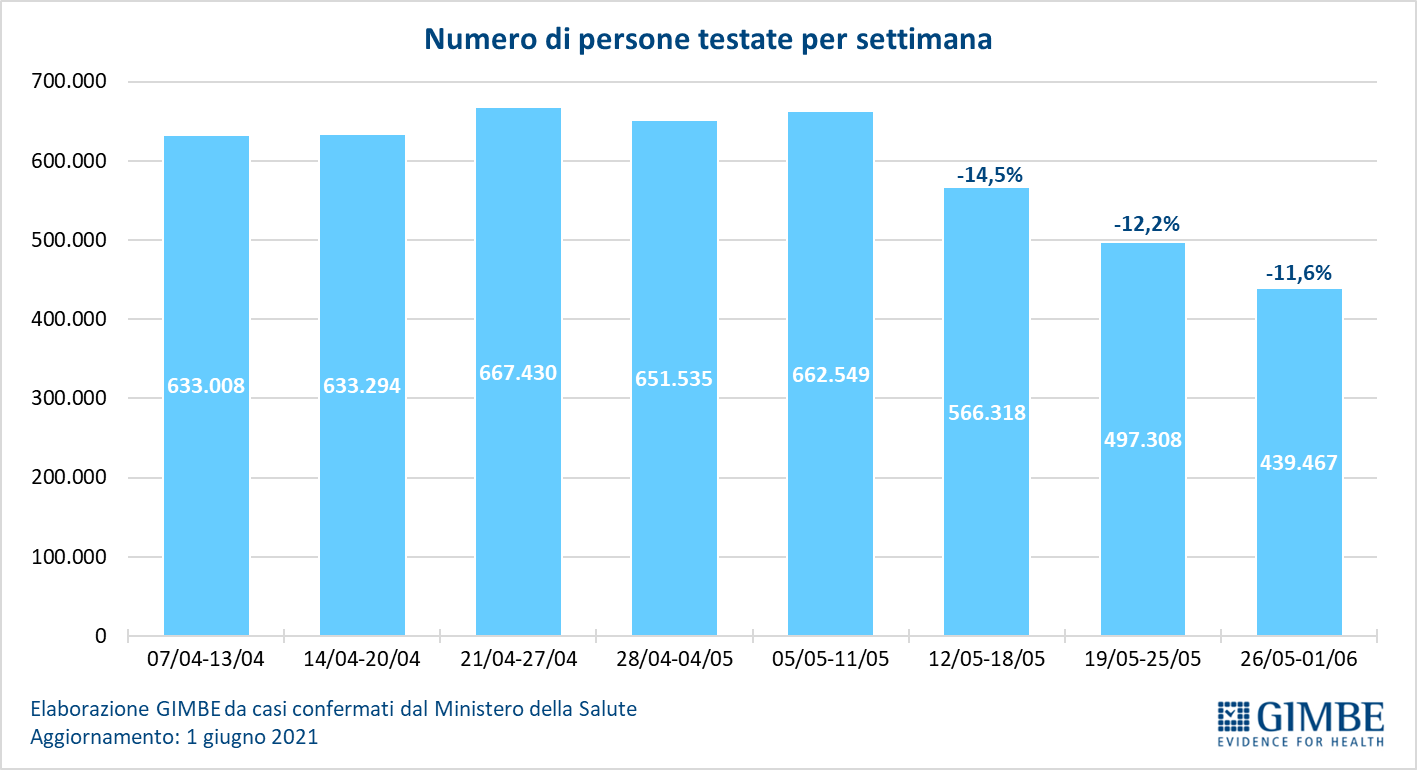
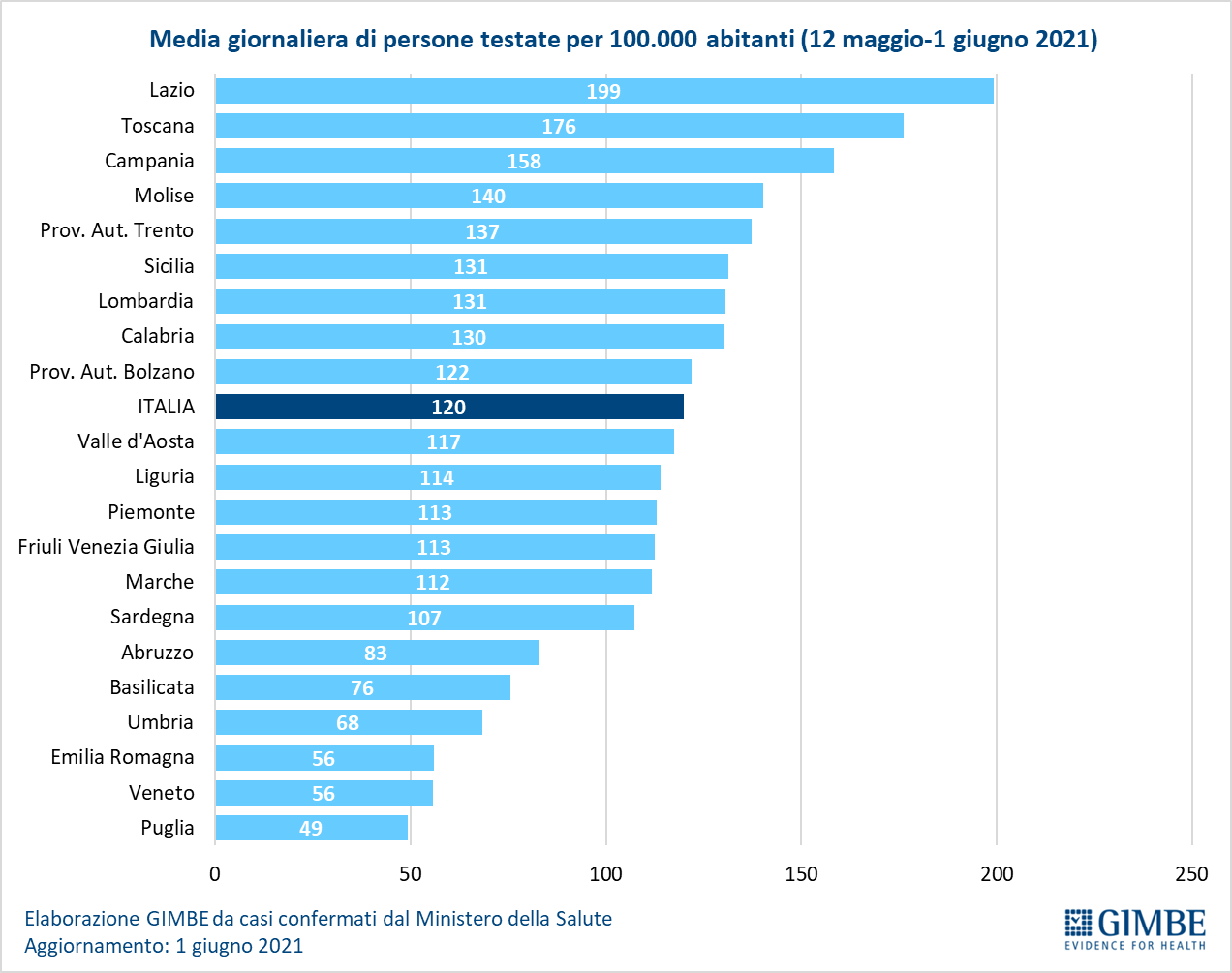
Vaccines: supplies. As of June 2 (update 6.08) 39,958,409 doses were delivered, equal to 52.4% of those scheduled for the 1st half of 2021. In detail: 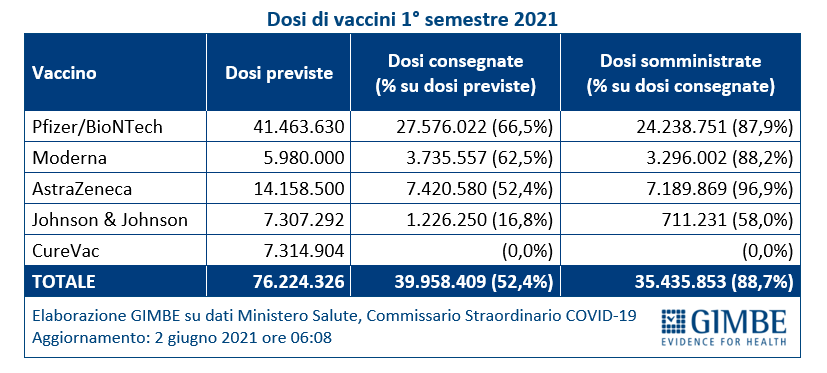
"Despite the increase in deliveries in the last week – explains the President – to comply with the supplies envisaged by the vaccination plan by the end of June, 36.3 million doses are still missing, an unrealistic number of deliveries, as we have been reiterating for weeks" (figure 7). In fact, the Extraordinary Commissioner announced that in June the Regions will receive over 20 million doses, a quantity that would close the quarterly final balance of supplies with about 15 million doses less than expected.
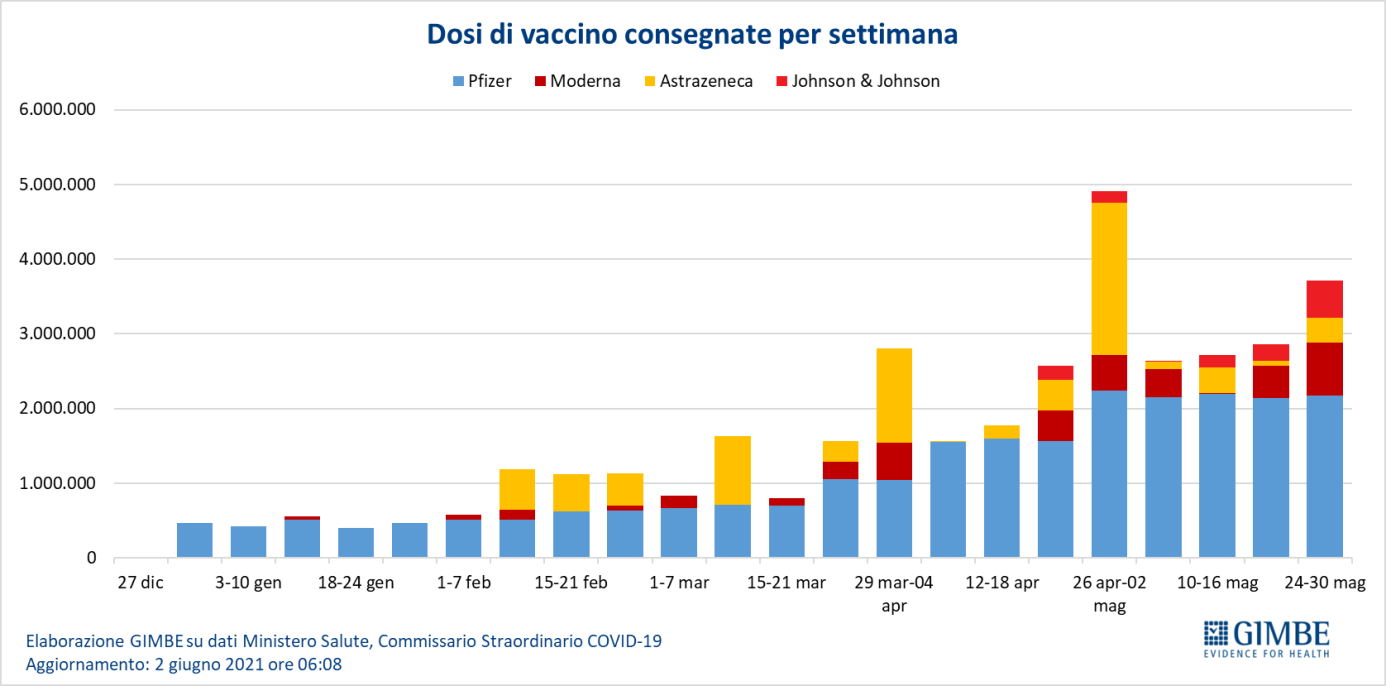
Vaccines: administrations.
As of June 2 (update 6.08), 40.3% of the population received at least one dose of vaccine (no.23.852.541) and 20.7% completed the vaccination cycle (no.12.294.543), ( figure 8). Considering that the Regions are using almost all of the doses available, the non-take-off of deliveries affects the number of administrations, now stable for a couple of weeks (figure 9) with the 7-day moving average which has reached 500,000 inoculations / die (Figure 10).
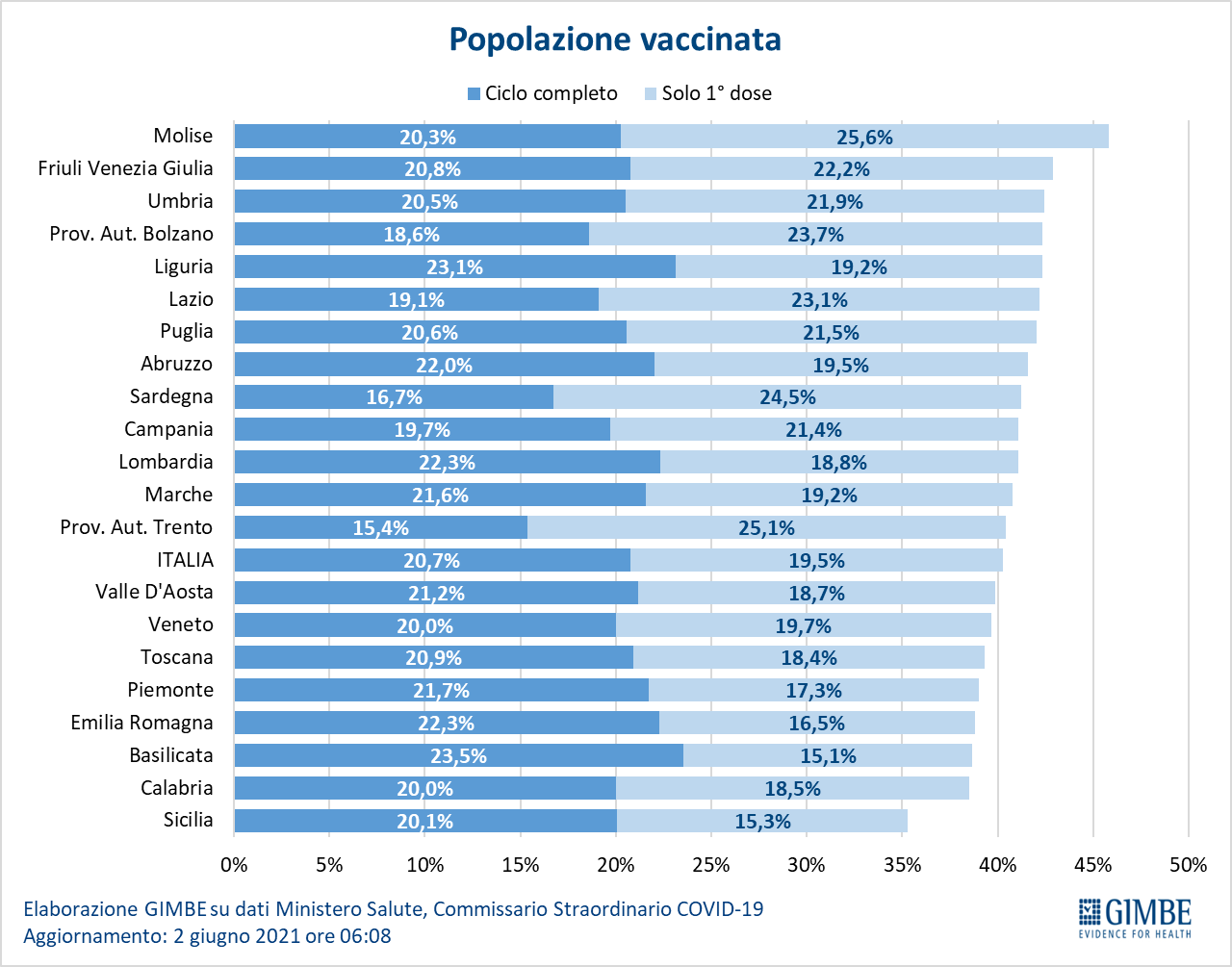
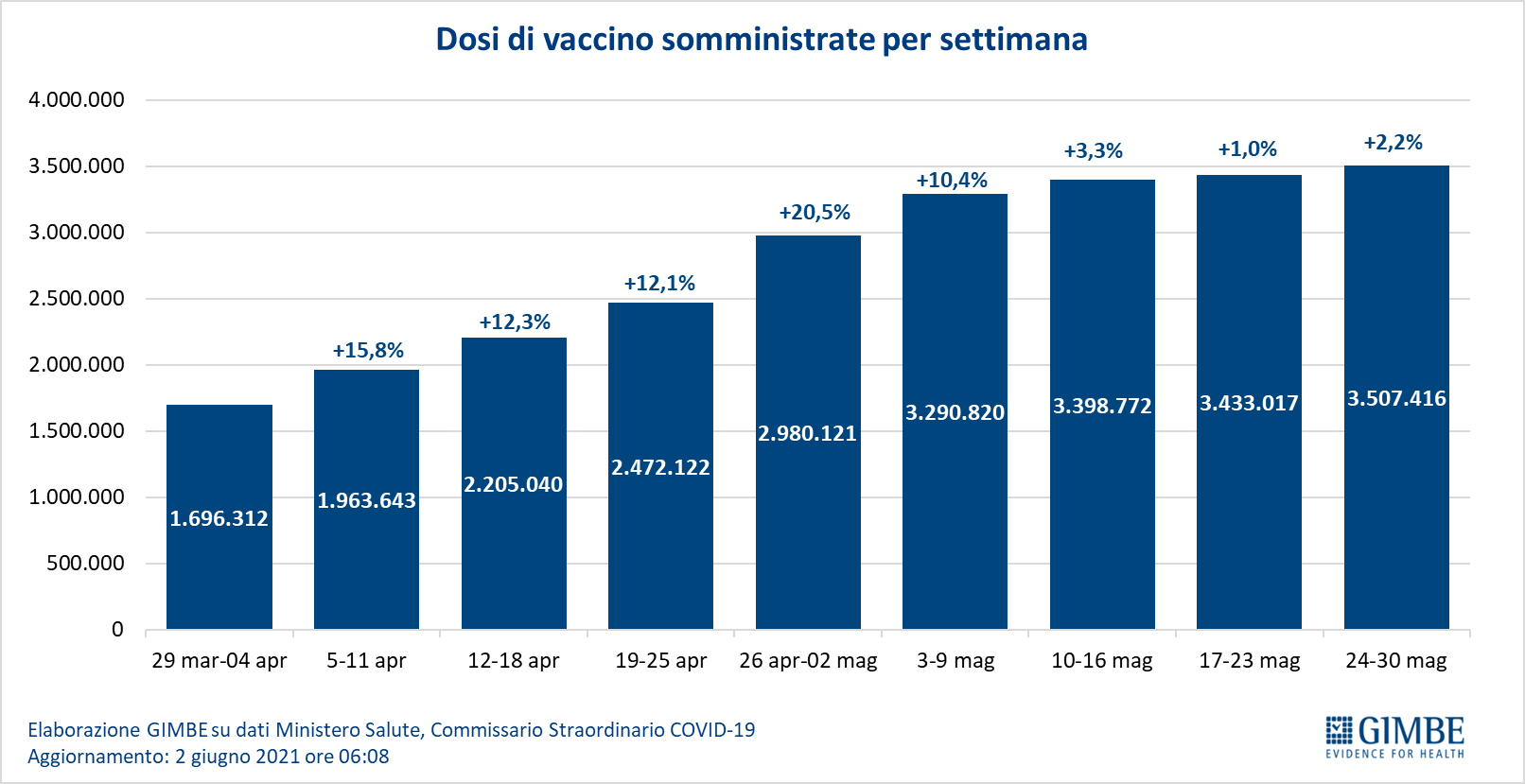
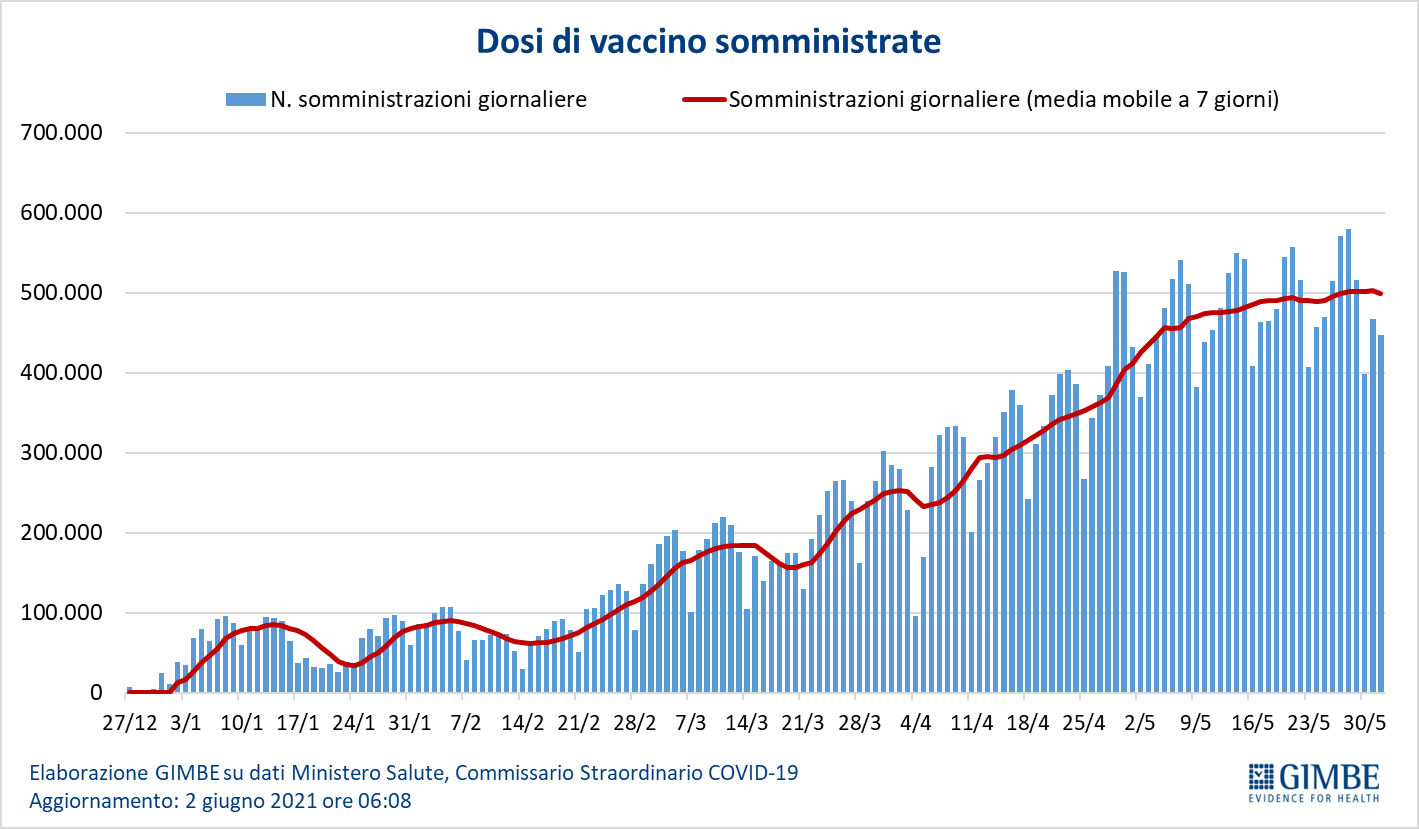
Vaccines: coverage of priority categories.
81.5% of the over 60s received at least the first dose of the vaccine, with some regional differences: if Puglia, Umbria, Lazio, Lombardy, Veneto and Molise exceed 85%, Sicily still remains below 70%. In detail:
- Over 80: of the over 4.4 million, 3,736,001 (83.4%) completed the vaccination course and 386,742 (8.6%) received the first dose only (Figure 11).
- Age range 70-79: of the over 5.9 million, 2,109,513 (35.4%) completed the vaccination course and 2,884,265 (48.4%) received the first dose only (Figure 12).
- Age range 60-69: of the over 7.3 million, 2,136,231 (28.7%) completed the vaccination course and 3,325,680 (44.7%) received the first dose only (Figure 13).
- Fragile subjects and their caregivers: for this category the data are no longer available, as from 28 May in the official repository the administrations are reported exclusively by age group.
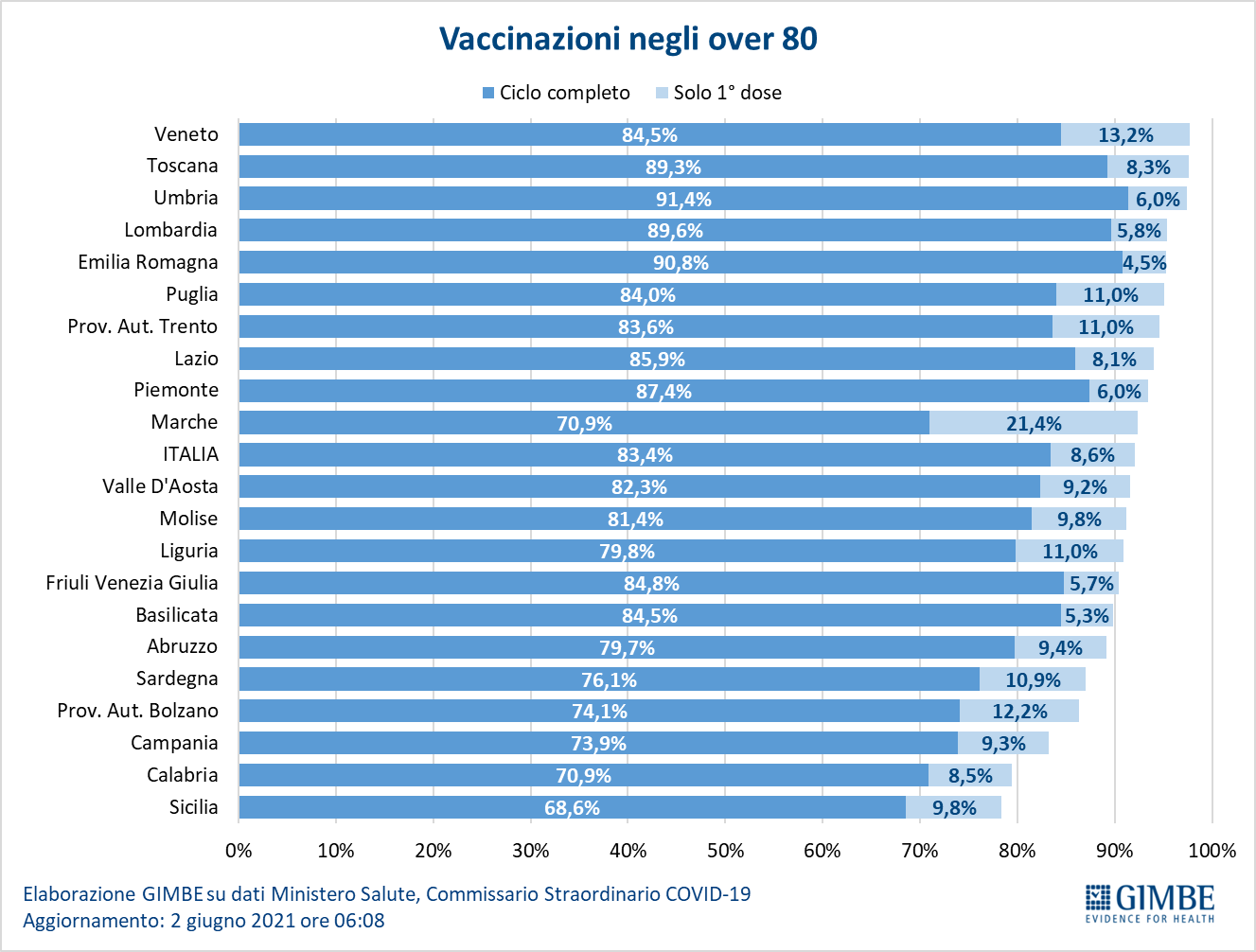
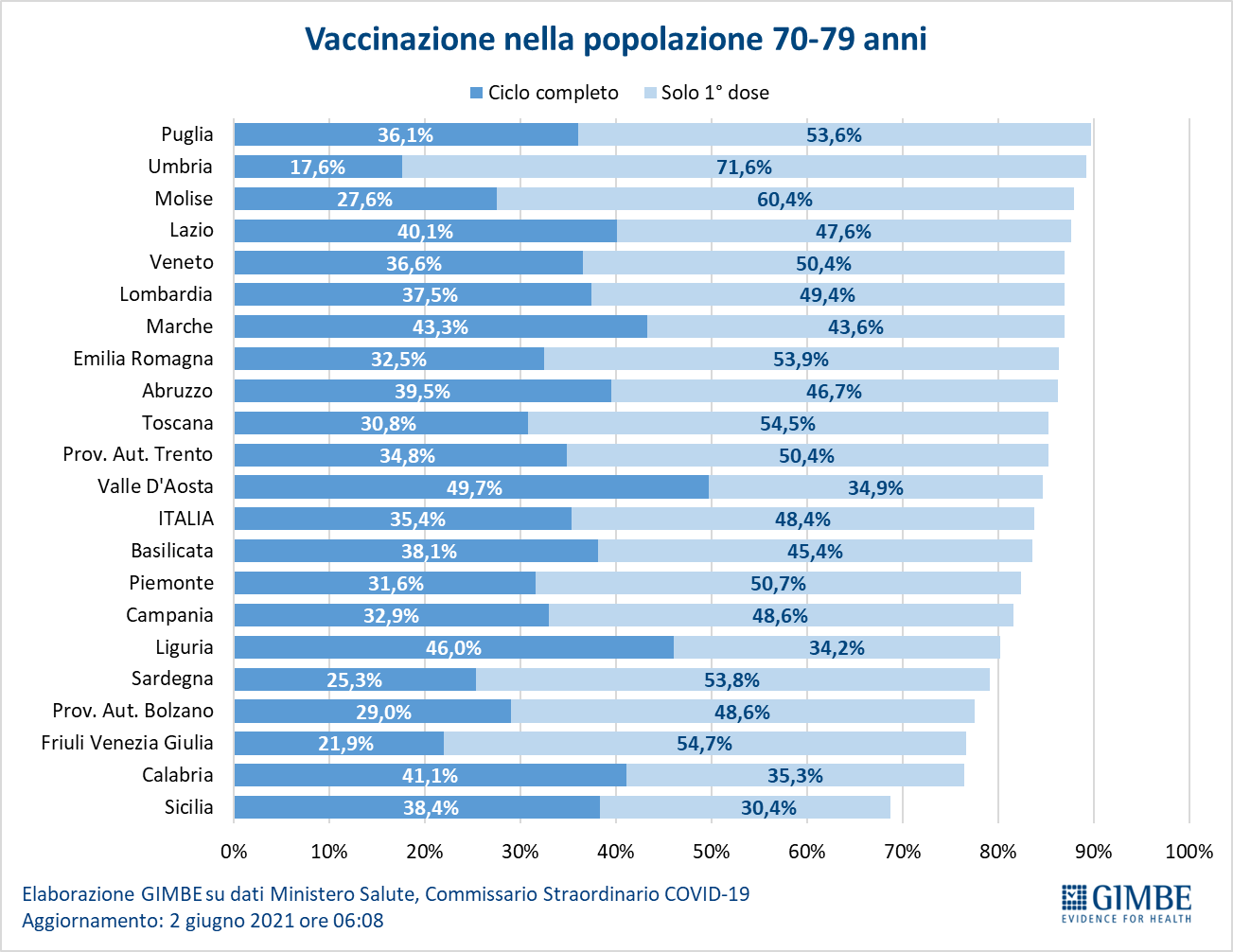
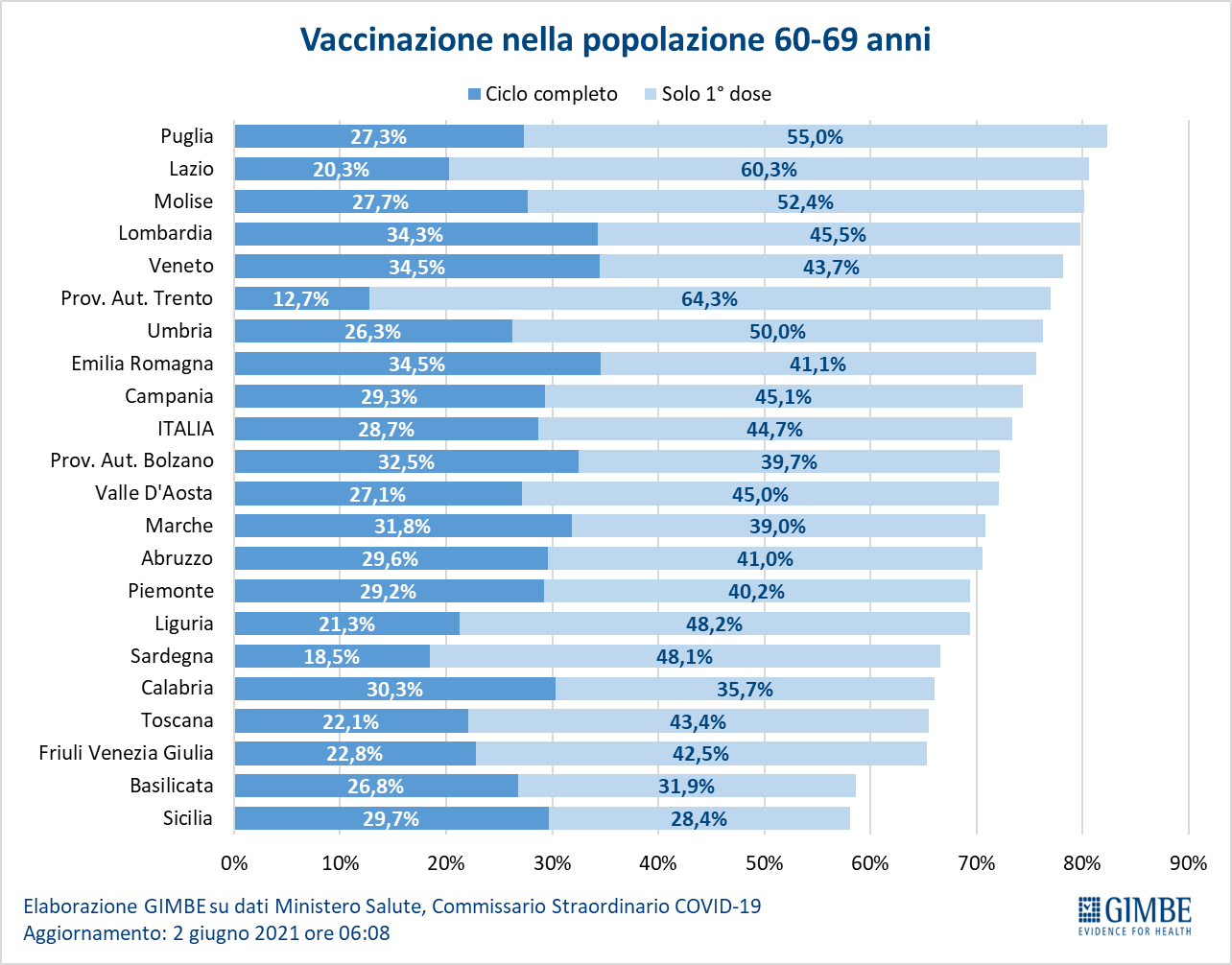
"While coverage begins to rise in the 50-59 and 40-49 age groups – specifies Gili – there are still over 3.3 million over 60s with a high risk of hospitalization and death who have not received even the first dose of vaccine". More precisely, 8% of those over 80 (no. 357,683), 16.3% of the 70-79 age group (971,466) and 26.6% of the 60-69 age group (no. 1,979,297) ( figure 14).
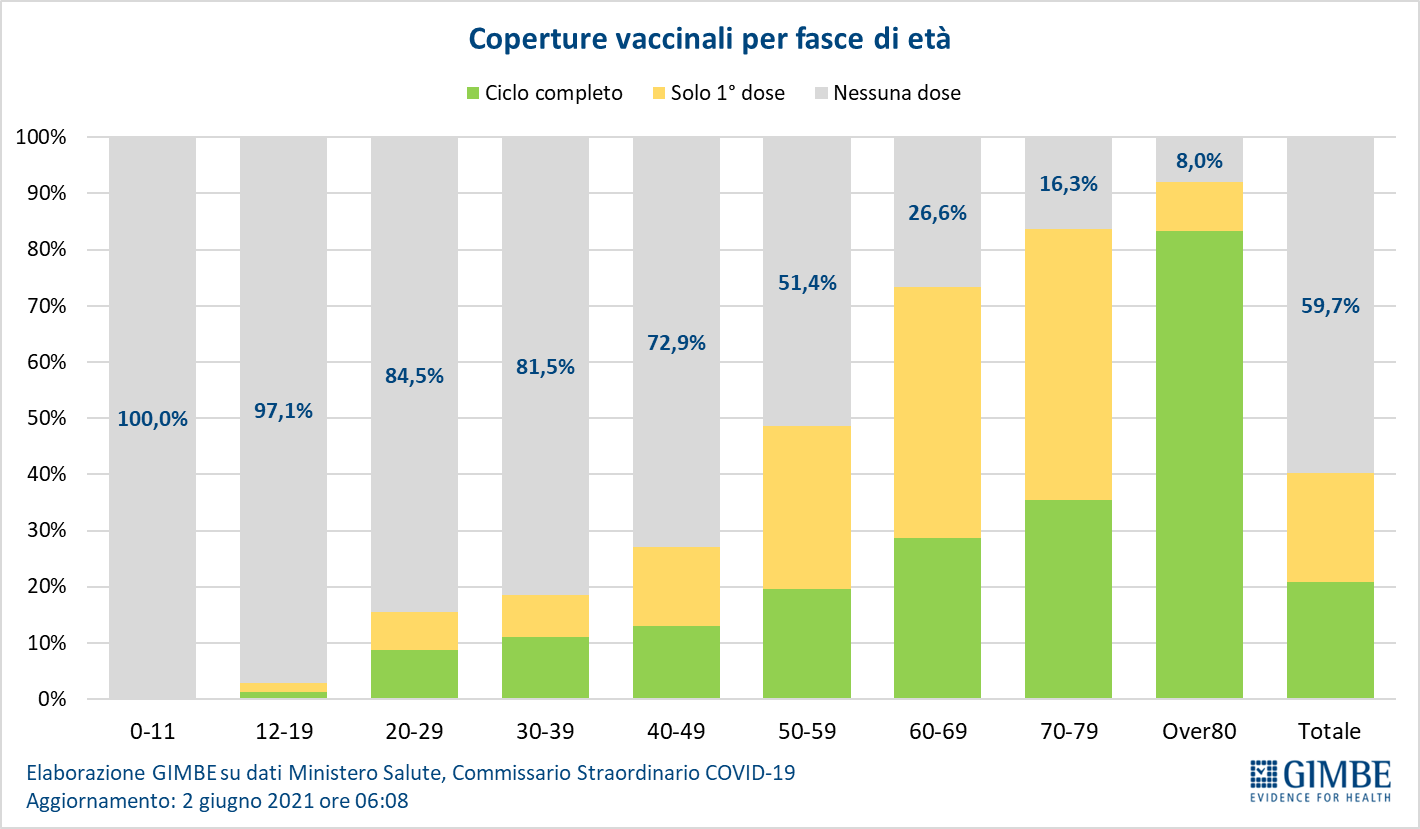
"The clear improvement of the pandemic situation – concludes Cartabellotta – if on the one hand it attests the success of the" reasoned risk ", on the other it requires that prudent optimism be accompanied by a shared strategy between the Government and the Regions to guarantee the irreversibility of the reopening" . The proposals of the Gimbe Foundation go in this direction:
- To provide the new system for assigning colors to the Regions with the necessary corrections (eg standard of swabs per 100 thousand inhabitants) to encourage testing and resume tracing, without fear of not conquering or losing the white area.
- Define a unique way to promptly identify and stem any outbreaks
- Enhance the sequencing of the variants, in particular in some Regions, and in case of spread of the Indian variant, administer the second dose to the elderly and frail according to the optimal range of clinical trials.
- Implement new strategies to vaccinate over 3.3 million over 60s without coverage and at high risk of hospitalization: eg. active call, dedicated open days, dedicated institutional communication.
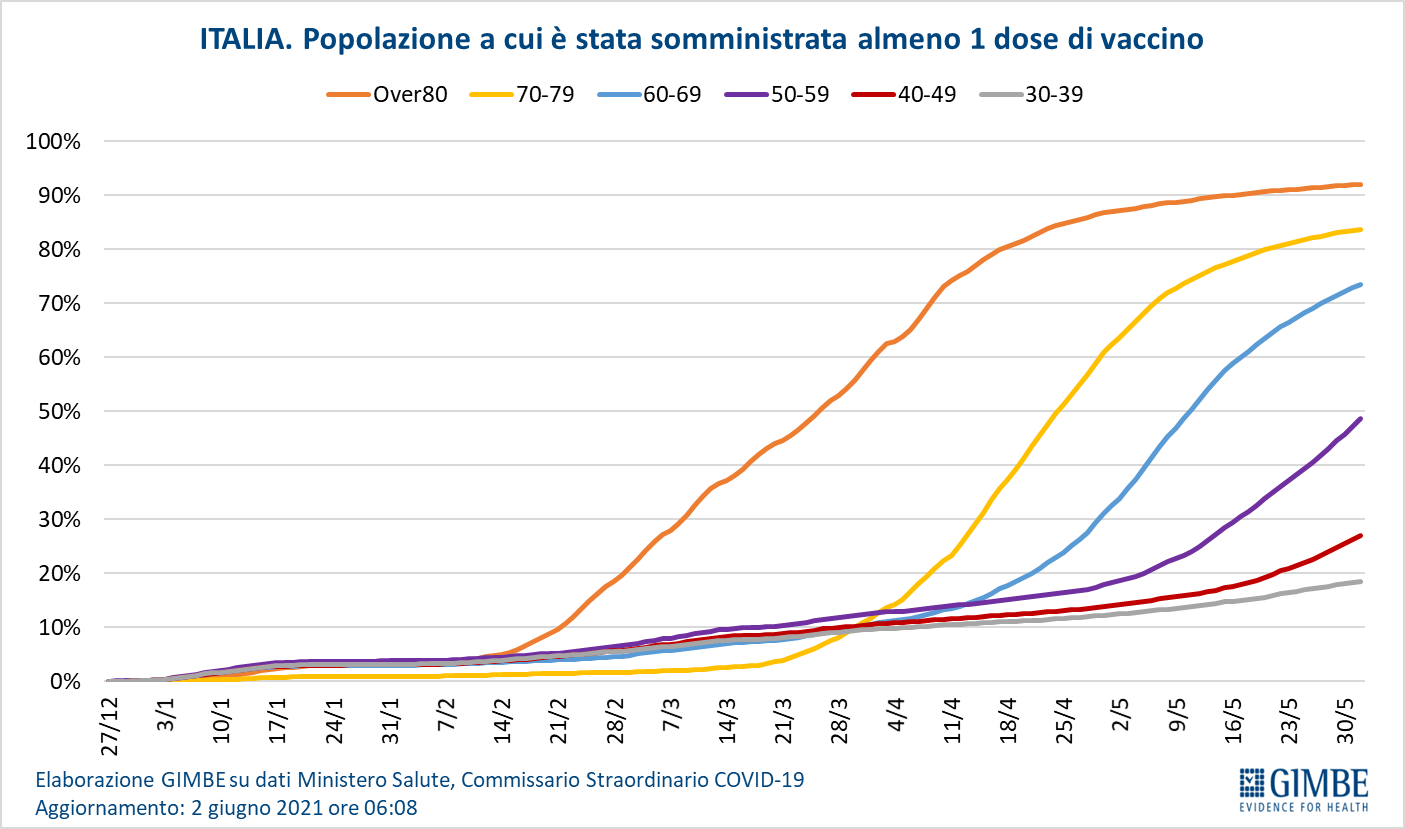
This is a machine translation from Italian language of a post published on Start Magazine at the URL https://www.startmag.it/sanita/come-va-la-vaccinazione-in-italia-report/ on Thu, 03 Jun 2021 08:14:59 +0000.
